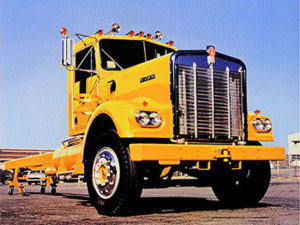EPA urged not to repeal rule regulating glider truck emissions
From Transport Topics. Dozens of representatives for trucking trade associations, health and environmental nonprofits, private citizens, truck dealers and manufacturers on Dec. 4 urged the U.S. Environmental Protection Agency not to repeal a provision in the 2016 Obama administration Phase 2 greenhouse gas reduction rule to regulate emissions requirements for glider kits. At an EPA…

From Transport Topics.
Dozens of representatives for trucking trade associations, health and environmental nonprofits, private citizens, truck dealers and manufacturers on Dec. 4 urged the U.S. Environmental Protection Agency not to repeal a provision in the 2016 Obama administration Phase 2 greenhouse gas reduction rule to regulate emissions requirements for glider kits.
At an EPA hearing, about 60 people testified that the estimated 10,000 glider kits currently in existence — trucks with new chassis but older remanufactured engines — were among the “oldest, dirtiest, deadliest” vehicles on U.S. highways.
The EPA hearing was held in response to a proposed rule issued last month to repeal medium- and heavy-duty truck Phase 2 greenhouse gas emission and fuel efficiency standards for the glider industry.
“The previous administration attempted to bend the rule of law and expand the reach of the federal government in a way that threatened to put an entire industry of specialized truck manufacturers out of business,” EPA Administrator Scott Pruitt said in a recent statement.
Pruitt said that gliders not only provide a more affordable option for smaller owners and operators, but also serve as a key economic driver to numerous rural communities.
But the majority of those commenting at the hearing blasted the repeal plan with claims that ranged from detailing the effects of truck pollution to blunt accusations that Pruitt is more concerned with the health of the glider kit industry than the U.S. population.
A decade ago, glider kits in the United States were mostly limited to vehicles that had been in an accident that left the body unrepairable, but the powertrain still intact, Rachel Muncrief, who directs the heavy-duty vehicles program for the International Council on Clean Transportation, told EPA officials.
But in recent years, sales of gliders have increased exponentially as a “deliberate attempt by glider kit manufacturers and assemblers to circumvent emissions control regulations,” Muncrief said.
See full story from Transport Topics online.
